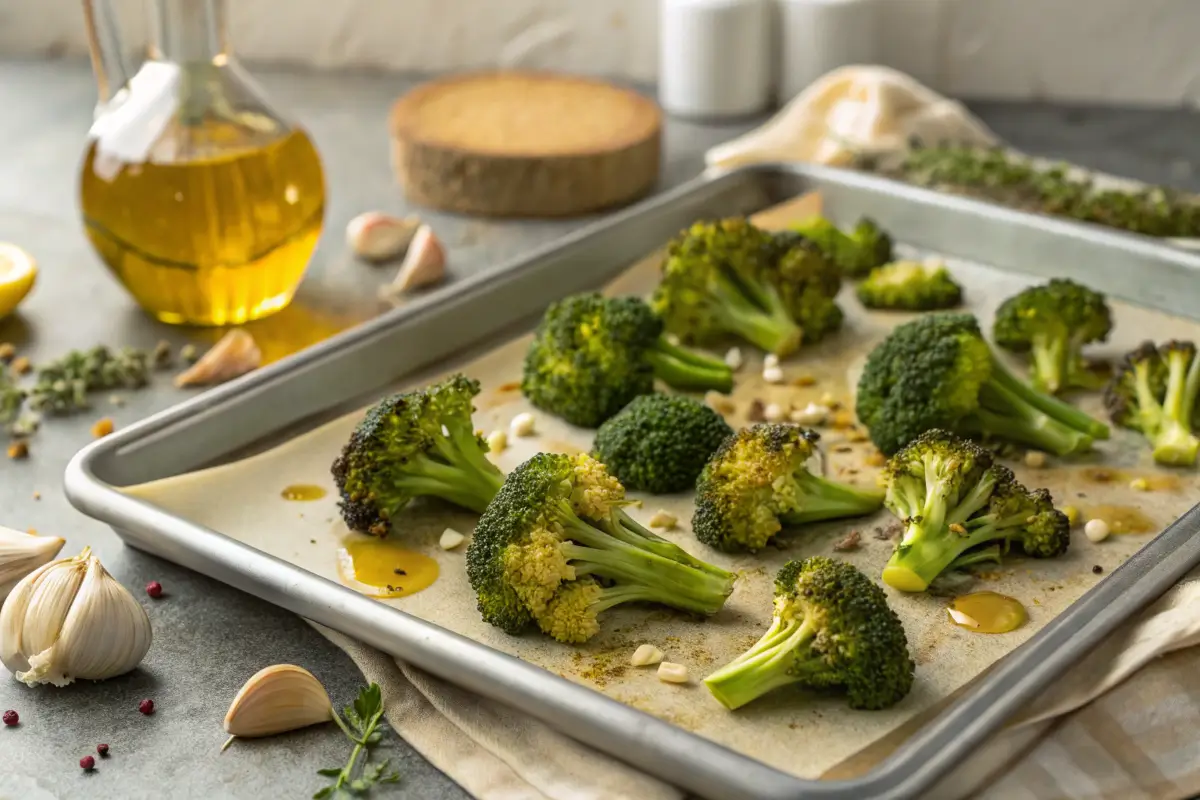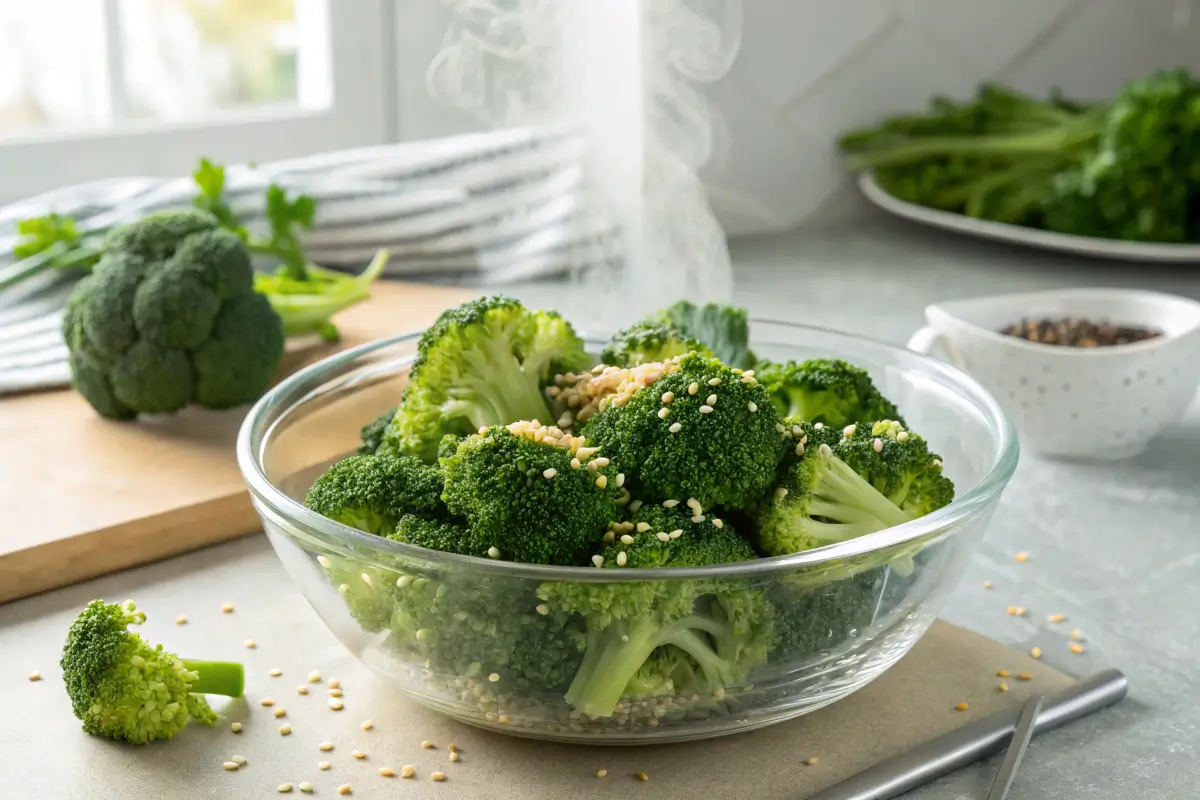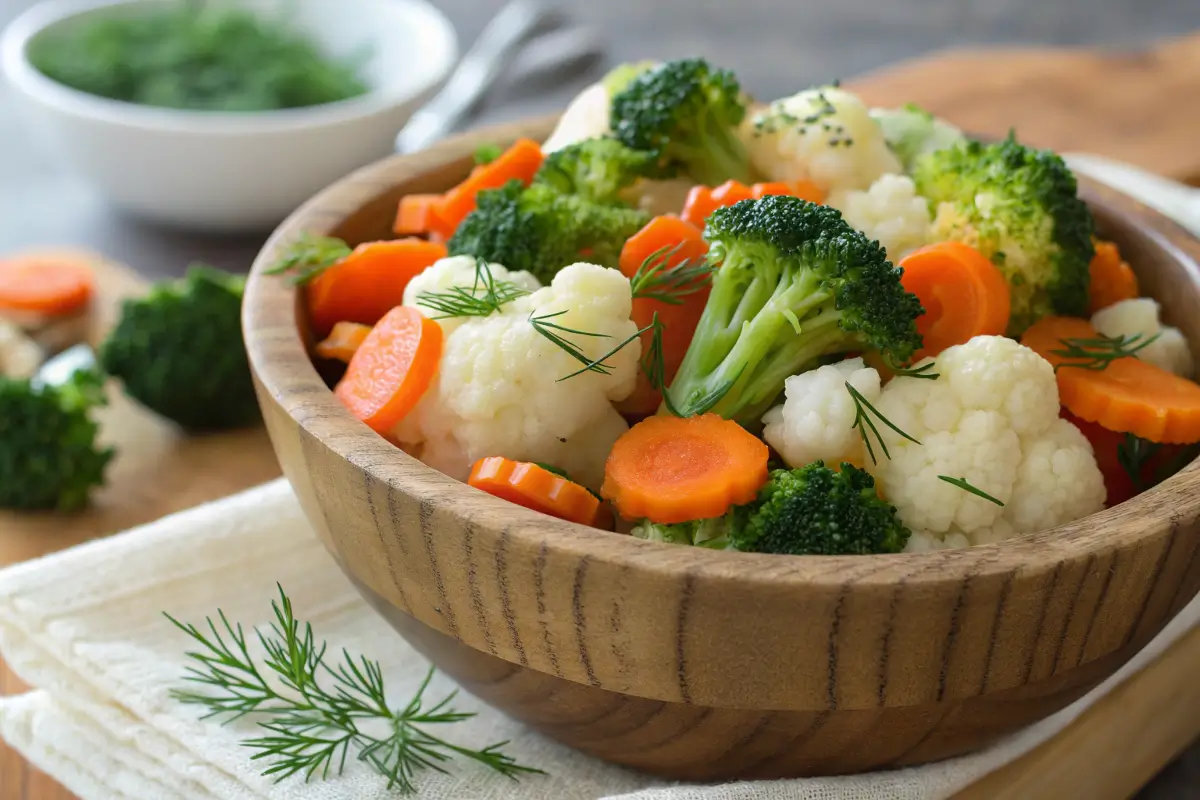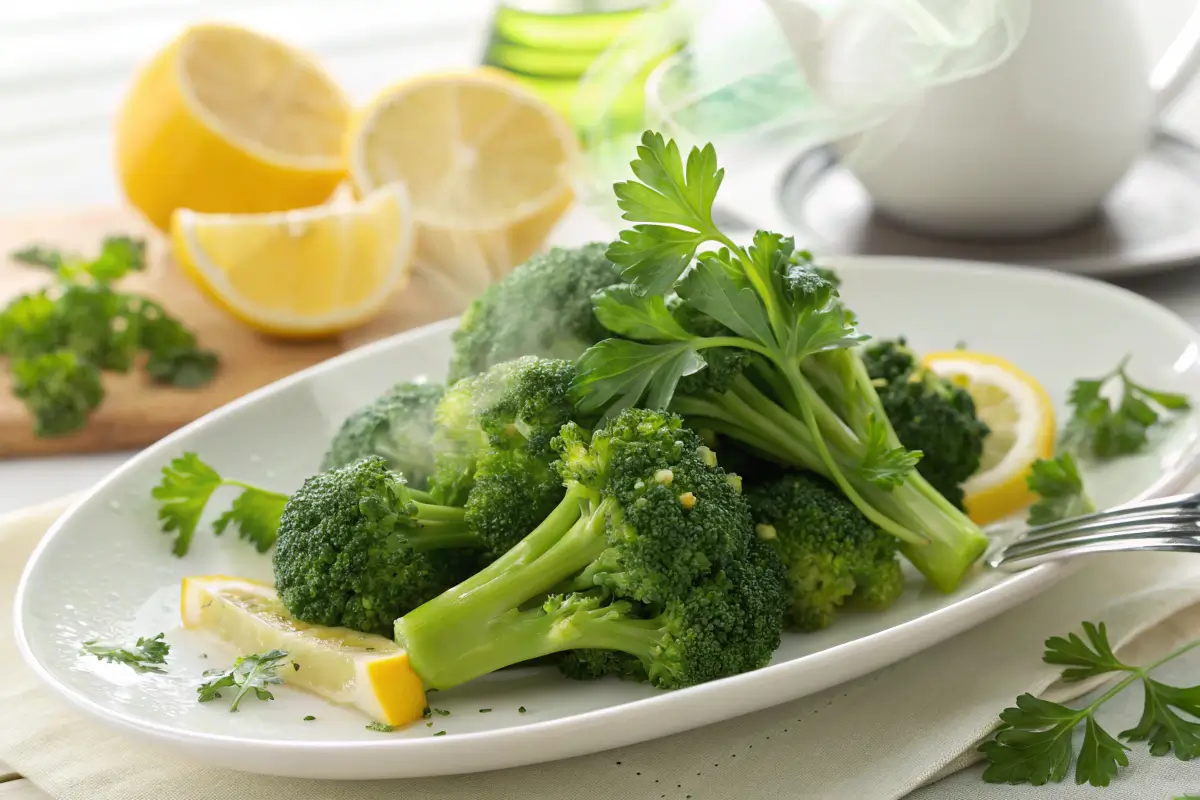Broccoli is a superstar in the world of healthy eating, packed with vitamins, minerals, and antioxidants that offer a plethora of health benefits. But here’s the catch: how you cook this vibrant veggie can make or break its nutritional value. From steaming and roasting to microwaving and sautéing, each method impacts broccoli’s nutrients differently. So, what is the most nutritious way to cook broccoli?
In this article, we’ll uncover the science behind broccoli’s nutritional profile, explore popular cooking methods, and share tips to make the most of this versatile vegetable. By the end, you’ll know exactly how to prepare broccoli in a way that’s not only delicious but also nutrient-dense. Let’s dig in!
Why Broccoli Deserves Its Superfood Status
Broccoli has earned its reputation as one of the healthiest vegetables, and for good reason. It’s a cruciferous vegetable closely related to cabbage, cauliflower, and kale, all of which are known for their impressive nutrient profiles. But broccoli takes the crown when it comes to versatility and health benefits. What is the most nutritious way to cook broccoli? Exploring this question can help ensure you retain its incredible nutritional value.
What Makes Broccoli a Nutritional Powerhouse?
Broccoli is brimming with essential nutrients that your body craves. It’s an excellent source of vitamin C, vitamin K, and folate, as well as potassium and manganese. But the real magic lies in its phytonutrients. Broccoli contains sulforaphane, a powerful compound linked to cancer prevention and improved heart health.
Another standout feature is its high fiber content, which promotes better digestion and keeps you feeling fuller for longer. Additionally, broccoli is low in calories but loaded with water, making it a fantastic choice for weight management.
The Key Nutrients That Set Broccoli Apart
Here’s a closer look at what makes broccoli so special:
- Vitamin C: Boosts immunity and supports skin health.
- Vitamin K: Crucial for blood clotting and bone health.
- Sulforaphane: A potent antioxidant with anti-inflammatory properties.
- Folate: Supports healthy cell growth and prevents certain birth defects.
- Fiber: Aids digestion and contributes to heart health.
Whether you’re looking to improve your diet, lose weight, or simply add more greens to your plate, broccoli is a no-brainer. But remember, cooking it the right way is key to unlocking its full potential.
What Happens When You Cook Broccoli?
Cooking broccoli is more than just a culinary skill—it’s a science. How broccoli is prepared significantly impacts its nutrient retention. To determine what is the most nutritious way to cook broccoli, we must first explore what happens to its nutrients during different cooking processes.
Does Cooking Broccoli Impact Its Nutrients?
Broccoli is rich in water-soluble vitamins, like vitamin C and B vitamins. Unfortunately, these nutrients are sensitive to heat and can leach into cooking water. Fat-soluble nutrients, such as vitamin K, are more stable, but improper cooking techniques may still degrade them.
Interestingly, light cooking can enhance certain antioxidants, like sulforaphane, making them more bioavailable. Sulforaphane is known for its anti-inflammatory properties, and gentle heat can help release it from broccoli’s cells.
Raw vs. Cooked Broccoli: Which Is Healthier?
Eating broccoli raw preserves its full nutrient profile, especially its heat-sensitive vitamins. However, raw broccoli may be harder to digest for some people due to its high fiber content. Cooking, especially methods like steaming or blanching, softens the fibers, making broccoli easier on the stomach while retaining most nutrients.
So, does raw always trump cooked? Not necessarily. Some studies suggest that cooking enhances specific nutrients like carotenoids and sulforaphane, depending on the method used. The key lies in balance and technique.
Exploring the Best Ways to Cook Broccoli
Finding the answer to what is the most nutritious way to cook broccoli requires examining various cooking methods. Each approach has its advantages and trade-offs.
Steaming: Retaining Nutrients While Enhancing Flavor
Steaming is often hailed as the healthiest way to cook vegetables, and broccoli is no exception. By avoiding direct contact with water, steaming preserves water-soluble vitamins. It also enhances broccoli’s natural flavor without requiring added fats.
- How to Steam Broccoli Correctly: Use a steamer basket and cook for 5-7 minutes until tender but still bright green.
- Why Steaming is the Best: Research shows that steaming retains up to 90% of broccoli’s vitamin C content.
Boiling: Pros and Cons for Nutrient Retention
Boiling is a common cooking method, but it’s not the most nutrient-friendly. The downside? Vitamin C and B vitamins tend to escape into the boiling water.
- How to Minimize Nutrient Loss: Keep boiling time short and use minimal water. Better yet, reuse the nutrient-rich water in soups or sauces.
- When Boiling Works: It can soften the stems effectively for recipes like purees or soups.
Roasting: A Crisp and Flavorful Alternative

Roasting broccoli brings out its natural sweetness through caramelization, but prolonged exposure to high heat can degrade heat-sensitive nutrients.
- Best Practices for Roasting: Toss broccoli with a small amount of olive oil and roast at 400°F (200°C) for 20 minutes. Add garlic or lemon for extra flavor.
- Nutritional Changes During Roasting: While vitamin C might take a hit, fat-soluble nutrients like vitamin K remain intact.
Microwaving: Quick, Convenient, and Nutritious

Microwaving broccoli might seem unconventional, but it’s surprisingly effective at retaining nutrients. It uses minimal water and cooks quickly, reducing nutrient loss.
- How to Microwave Broccoli: Place broccoli in a microwave-safe bowl with a splash of water, cover, and cook on high for 3-4 minutes.
- Why Microwaving Works: Studies suggest that microwaving preserves antioxidants and water-soluble vitamins better than boiling.
Sautéing: Adding Flavor Without Sacrificing Nutrition
Sautéing combines heat and oil to bring out broccoli’s flavors. While it can lead to some nutrient loss, using healthy oils like olive oil can compensate by increasing fat-soluble vitamin absorption.
- Balancing Oil Use: Use just enough oil to coat the broccoli lightly. Pair with garlic or chili for an antioxidant boost.
- Nutrient Preservation: Quick sautéing (under 5 minutes) minimizes vitamin loss while enhancing texture and taste.
Blanching: Preserving Texture and Color

Blanching briefly boils broccoli before plunging it into ice water, locking in its vibrant green hue and crisp texture. It’s an excellent prep method for salads or stir-fries.
- Role of Blanching: Great for maintaining vitamin C content while improving digestibility.
- Using Blanched Broccoli: Add to grain bowls, salads, or pasta dishes.
This section provides a detailed breakdown of broccoli cooking methods to help readers choose the best option for their preferences and nutritional goals. If you’re exploring recipes that incorporate perfectly cooked broccoli, this roasted broccoli guide might be a great place to start!
Enhancing Broccoli’s Nutritional Benefits
Even when broccoli is cooked to preserve its nutrients, there are clever ways to elevate its health benefits even further. Pairing broccoli with the right ingredients not only enhances its flavor but also improves its nutritional value. Let’s explore these combinations.
Pairing Broccoli with Healthy Additives
Broccoli’s mild flavor makes it an ideal canvas for nutrient-rich additions. Combining it with healthy fats, acids, or complementary vegetables boosts its overall health impact.
- Olive Oil and Lemon Juice: Drizzling olive oil on broccoli enhances the absorption of its fat-soluble vitamins like vitamin K. A squeeze of lemon juice adds a zesty flavor and provides vitamin C, complementing broccoli’s antioxidants.
- Herbs and Spices: Add a pinch of turmeric, a known anti-inflammatory, or black pepper for a kick of flavor and additional health benefits.
Cooking Broccoli with Garlic: Boosting Antioxidant Properties
Garlic is a nutritional powerhouse on its own, rich in compounds like allicin. When combined with broccoli, garlic enhances its antioxidant potential.
- Sautéing Broccoli with Garlic: Lightly sauté broccoli in olive oil with minced garlic to create a dish that’s both flavorful and health-packed.
- Garlic Roasted Broccoli: Roast broccoli florets with garlic cloves for a caramelized, nutrient-dense side dish.
For a recipe that combines broccoli with complementary ingredients, explore this healthy broccoli-cauliflower salad for a refreshing twist.
Common Mistakes to Avoid When Cooking Broccoli
No matter how you cook broccoli, a few common missteps can compromise its flavor and nutrients. By avoiding these pitfalls, you can ensure your broccoli remains both delicious and nutritious.
Overcooking: A Nutritional Pitfall
Broccoli is best enjoyed when it’s bright green and slightly crisp. Overcooking not only dulls its color but also significantly reduces its vitamin C and sulforaphane content.
- How to Avoid Overcooking: Keep cooking times short, especially for methods like steaming or blanching. Check for doneness by piercing a floret with a fork—it should be tender but firm.
Not Using the Stems: Wasting Nutritional Potential
Broccoli stems are often overlooked and discarded, but they’re just as nutritious as the florets. Packed with fiber and nutrients, they’re an excellent addition to many dishes.
- How to Use Stems: Peel the tough outer layer and slice the tender core into matchsticks for stir-fries, soups, or raw salads.
FAQs on Cooking Broccoli
Cooking broccoli raises several questions, especially if you’re trying to maximize its nutritional value. Below are answers to some common queries, helping you determine what is the most nutritious way to cook broccoli.
Is It Better to Eat Broccoli Raw or Cooked?
Both raw and cooked broccoli have their advantages. Raw broccoli retains all its vitamins and minerals, especially vitamin C and sulforaphane. However, lightly steaming or microwaving broccoli can actually make sulforaphane more bioavailable, enhancing its health benefits.
How Long Should You Steam Broccoli to Retain Nutrients?
Steaming broccoli for 5–7 minutes is ideal. This short cooking time preserves its bright green color and most of its water-soluble vitamins while softening the texture just enough.
Can Roasting Broccoli Make It Less Healthy?
Roasting broccoli can slightly reduce heat-sensitive nutrients, like vitamin C. However, the caramelized flavor and retained fat-soluble vitamins, like vitamin K, make roasting a flavorful and healthy choice, especially when paired with olive oil.
What’s the Healthiest Oil to Use for Sautéing Broccoli?
Olive oil is an excellent choice for sautéing broccoli. It enhances the absorption of fat-soluble vitamins while adding heart-healthy monounsaturated fats. A small amount of avocado oil or ghee also works well for higher-heat cooking.
Conclusion and Final Recommendations
Broccoli is a versatile and nutritious vegetable, but how you prepare it can greatly affect its health benefits. To answer the question what is the most nutritious way to cook broccoli, steaming comes out on top for preserving its vitamins and antioxidants. That said, methods like roasting, sautéing, and microwaving are also excellent choices when done properly.
When cooking broccoli, remember to:
- Avoid overcooking to preserve nutrients and texture.
- Pair it with healthy fats and complementary ingredients like garlic or lemon juice.
- Use the stems creatively to minimize waste and maximize nutrition.
In the end, the healthiest way to cook broccoli is the method that fits your taste and lifestyle while keeping its nutritional value intact. By experimenting with different cooking techniques, you can enjoy this superfood in a variety of delicious ways.

